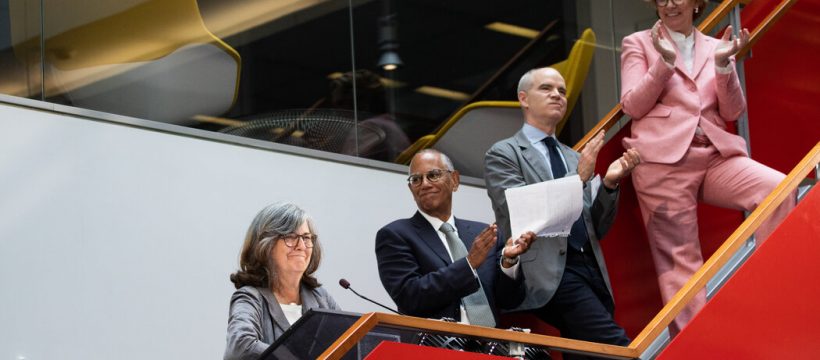When The New York Times was honored with the prestigious prize in the category of public service for its coverage of the coronavirus pandemic, it reflected the contributions of the entire newsroom.
By Katie Van Syckle
Times Insider explains who we are and what we do, and delivers behind-the-scenes insights into how our journalism comes together.
This month, from a steep red staircase overlooking The New York Times’s newsroom, Dean Baquet, the executive editor, announced that the staff had won the Pulitzer Prize for public service for its coverage of the coronavirus.
The Times, which has received 132 Pulitzers since they were first awarded in 1917, has won in the public service category, regarded as the most prestigious of the prizes, six times. Wesley Morris, a Times critic at large, also received a Pulitzer, his second, for criticism for his writing on the intersection of race and culture in America.
The Pulitzer board recognized several facets of the coronavirus coverage. The Times reported early on the outbreak in China in January 2020. Tracked cases across the nation and the world through an intensive data project. Relayed developments 24 hours a day. Reported on the race to understand the virus and the failure of governments to respond. Documented racial and social inequities of the pandemic. Provided vivid accounts of suffering worldwide. And observed the monumental death toll.
That coverage encompassed not just articles but graphics, video, data journalism, design, photography and podcasting. The effort drew upon the full resources of the newsroom, with many staff members putting themselves at personal risk and others taking on new roles to meet the demands of the coverage or provide support. And all of it was executed with nearly all employees working remotely and as The Times also covered the nation’s racial unrest, the impact of climate change and a tumultuous presidential campaign and election.
Speaking to employees, many of whom were watching the livestreamed awards ceremony at home, Mr. Baquet, along with other newsroom leaders, reflected on what it meant to be honored at this time.
Source: Read Full Article


